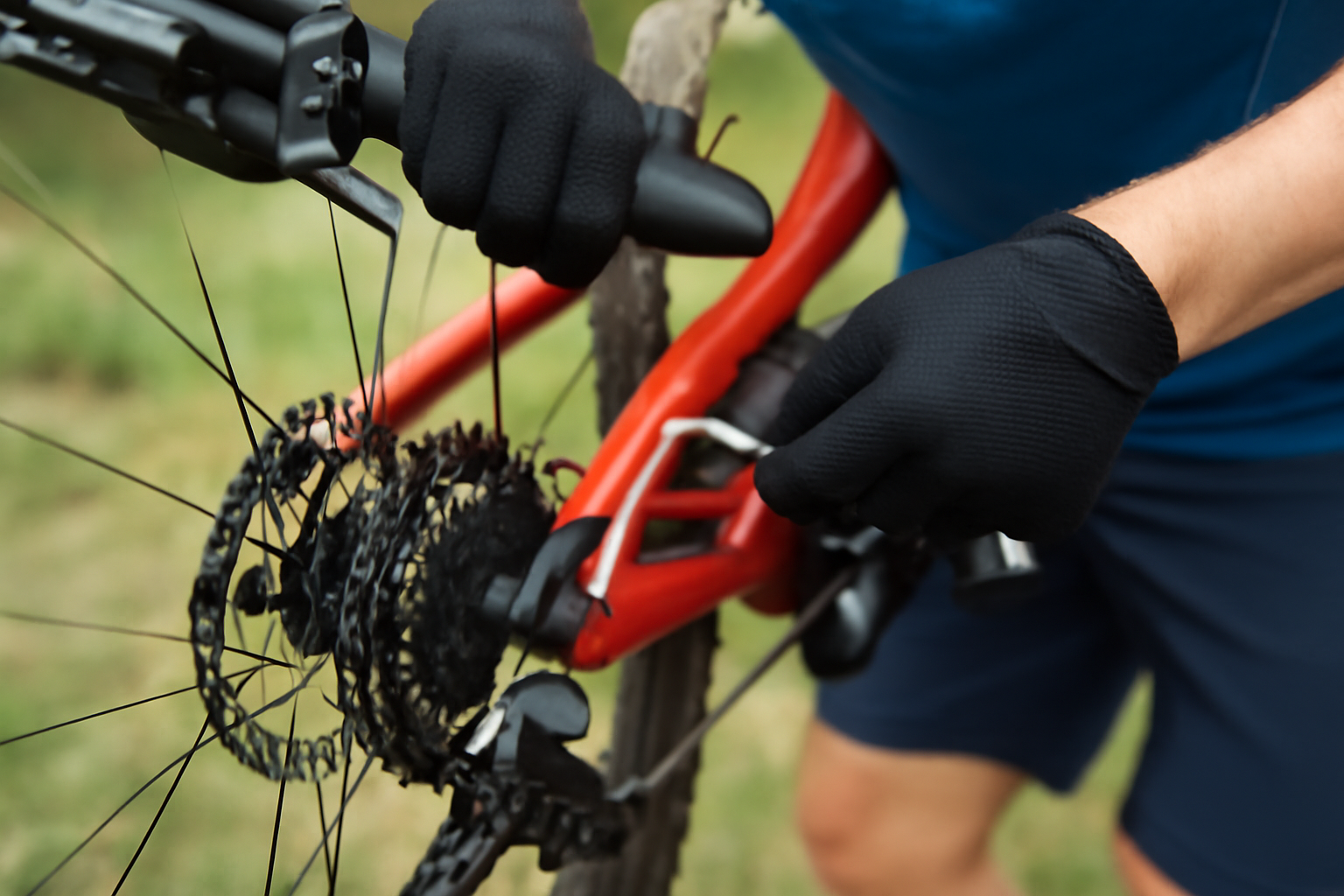Shifting gears on your mountain bike is pivotal to a smooth ride and productive performance, especially when you are riding through varying terrain. Correct gear shifting ensures a smooth transition, prevents excessive wear and tear on your bike parts, and maintains you in control on the various surfaces.
The ability to shift gears on a mountain bike can significantly improve your riding experience whether climbing steep inclines or cruising flat trails.
Knowing how to adjust gears on a mountain bike, can avoid problems, thus making your cycling more pleasant and hassle-free. Routine gear maintenance ensures that your bike is at its best.
1. Getting Familiar with the Mountain Bike Gear System
Before you change gears, understand how the gear system works on a mountain bike. Mountain bikes possess a system through which you are able to shift between different gears so that your performance is enhanced in terms of terrain.
- The chain is moved from one chainring to another by the front derailleur so that you can shift from a greater gear to a lesser gear depending upon the terrain difficulty.
- The chain is shifted by the rear derailleur across the cassette to provide a wide range of gears. Derailleur systems are operated by gear shifters on the handlebars.
- Understanding gear ratios enables you to select the optimal setting for all types of trails, providing improved speed and control on your ride.
2. Signs Your Gears Need Adjustment
There are a few indications which reveal your mountain bike’s gears need to be adjusted for the best performance.
- One of the most common issues is missing gears, whereby the bike abruptly jumps from gear to gear on a ride, normally due to improper alignment or tension.
- Another is slow or reluctant shifting, whereby you experience hesitation or resistance in shifting gears. If your chain slips or falls off, it could be a sign of misalignment or wear on your drivetrain.
- Additionally, noisy shifting is a warning that something is off with the derailleur or chain. By identifying these symptoms early on, you can prevent further damage and keep your bike operating smoothly.
3. The Equipment You’ll Need for Gear Adjustment
You’ll be needing some basic tools to make the adjustment of gears as necessary. The most essential tool will be Allen wrenches, with which you’ll be making adjustments to your bike’s derailleurs and bolts of other parts.
You’ll need screwdrivers (Phillips or flatheads) to make fine-adjustment of screws responsible for limit settings and derailleur positions. A chain checker tool is needed to determine chain wear and determine if it’s time to replace.
Finally, to include lubricant in the toolkit is essential for optimal working of the chain and derailleur components. This equipment will help you make the necessary adjustments effectively and efficiently.
4. Front Derailleur Adjustment
Front derailleur adjustment is critical in shifting smoothly between chainrings.
- First, ensure the derailleur is aligned correctly with respect to the chainrings, typically 1-2 mm above the largest chainring. Next, tweak the high and low limit screws.
- The high and low limit screws regulate the derailleur’s range. to avoid the chain overshooting the gear or falling off. Trimming alignment of the derailleur keeps the derailleur parallel to the chainrings and moving smoothly.
- Proper alignment of the front derailleur will enhance the gear shift and avoid chain drops during gear changes.
5. Rear Derailleur Adjustment
The rear derailleur governs shifts between the cogs, so it needs adjustment to shift appropriately.
- Begin by examining the hanger alignment since a bent derailleur hanger may cause shifting problems.
- Now, cut the high and low limit screws to make the derailleur go properly through the cassette without over-shifting or dropping the chain.
- Tightening the tension screw in a fine way makes the derailleur go smoothly and shift accurately. Realignment of rear derailleur is essential to provide a smooth ride and smooth shifting, especially during shifting from one gear to another while riding.
6. Shifter Cable Tension
Adjustment Shifter cable tension is what decides the quality of your shifting under load. To test tension, shift into a mid-geared position and observe if the derailleur is properly aligned. If the derailleur is seriously out of position, the tension is likely off.
To fix tension, rotate the barrel adjuster on the derailleur or shifter to tighten the cable or to loosen. Tightening the cable moves the derailleur to higher gears, and slackening it helps shift towards lower gears. After making adjustments, test the shifts for smoothness, especially when under load, to confirm tension is correct.
7. Test Ride and Fine-Tuning
After making all the necessary adjustments, it’s time to take a test drive to make sure everything is operating as it should. On your test ride, go through all the gears and observe any hesitation or skipping. Perform test shifts under load, such as on hills or during acceleration, to ensure that the bike picks up smoothly. If the shifting is still rough, you may need to perform fine-tuning adjustments while riding.
These can be subtle adjustments to derailleur alignment or cable tension. Realign the derailleur if necessary, since it can shift slightly during adjustment. A successful test ride confirms the adjustments were done properly and ensures optimum performance from your gears.
8. Tips for Regular Maintenance of Your Gears
Your gears will need less frequent adjustments and your bike will operate more smoothly with regular maintenance.
- Regularly cleaning and lubricating your bike is one of the most crucial parts of maintenance.
- Regular cleaning of the chain, derailleurs, and cogs prevents dirt and grime from accumulating and developing shifting problems.
- Regularly checking cable tension ensures shifts are always responsive and crisp. Worn parts, like the cassette or chain need to be replaced as soon as possible to prevent further wear and ensure smooth shifting.
By keeping an eye on these spots in your bike’s drivetrain, you can experience long-lasting performance and reduce the necessity for big adjustments.
Conclusion
By following these steps, you can keep your mountain bike gears properly adjusted, which makes your ride more enjoyable and effective. An appropriately adjusted gear mechanism translates to better overall performance, with which you can tackle various terrains with ease.
Regular gear checks and maintenance will keep your bike in prime condition, warding off unexpected issues and extending the life of your components. Regardless of whether you are a professional cyclist or a beginner, On a mountain bike, being able to change gears is a crucial ability that optimizes both the performance and enjoyment of your ride.

I am Ryan Ford, a mountain biking enthusiast who loves to explore the outdoors. I also like to go on adventures with friends and anything else that involves being outside. I love my bike because it gets me out of the house and gives me an opportunity to enjoy nature.

